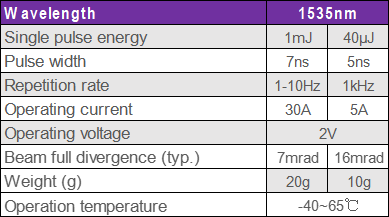The Application Prospects of Eye-safe Laser in the Field of Handheld LIBS
In recent years, Laser Induced Breakdown Spectroscopy (LIBS) technology has received increasing attention in the industrial field, especially in the fields of aluminum alloy detection and spodumene ore detection. The mainstream devices in the field of handheld LIBS devices are still foreign products. As the lithium battery era is approaching, can domestic instrumentation manufacturers make breakthroughs in the field of handheld LIBS under the guidance of new demand? The industry is waiting to see.
The solid-state laser technology in handheld LIBS devices has always been a bottleneck in LIBS technology. At present, the main lasers used for LIBS testing are: flashlamp-pumped solid-state lasers (laboratory use), diode-stack-pumped solid-state lasers (handheld device applications), and diode-pumped narrow pulse width microchip lasers (with relatively low energy). Diode-stack-pumped lasers have always been a pain point in industry applications due to their high power consumption, small operating temperature range, and difficulty in power stability control.
Recently, the Er: Glass 1535nm laser has been widely used in harsh environments such as military due to its special performance.At the same time, it has also received widespread attention from LIBS handheld device manufacturers and industry practitioners. In order to verify the application performance of 1535nm erbium glass laser in the field of LIBS, we conducted the following application verification experiments.
1.Verification of laser excitation performance
Taking a 1535nm laser with a pulse width of 7ns, a energy of 1mJ and a repetition rate of 10Hz as an example, the peak power of the laser is 143.8kW. When selecting a suitable focusing system, the spot is focused to 100μm, the peak power density is 1.82GW/cm2,meeting the LIBS excitation conditions.
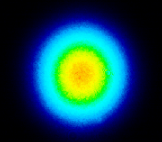 Typical beam quality TEM00
Typical beam quality TEM00 
7ns pulse width
2.Comparison ofexcitation effects between 1064nm and 1535nm lasers
In this experiment, four kinds of lasers were selected to excite brass samples, and the differences in LIBS spectral data of various lasers were compared and analyzed.
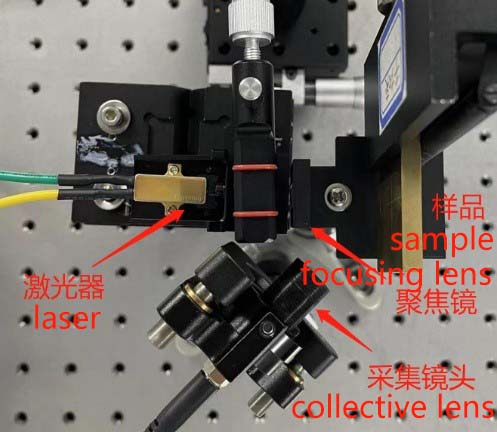
Test system
Two lasers of 1064nm and two lasers of 1535nm are selected for the test. The main parameters of the four lasers are as follows:
1-1064nm-10Hz-10mj-10ns Blue
2-1064nm-1kHz-120μJ-750ps Green
3-1535nm-1kHz-40μJ-5ns Red
4-1535nm-200Hz-70μJ-5ns Black
The excitation spectra are compared as follows:
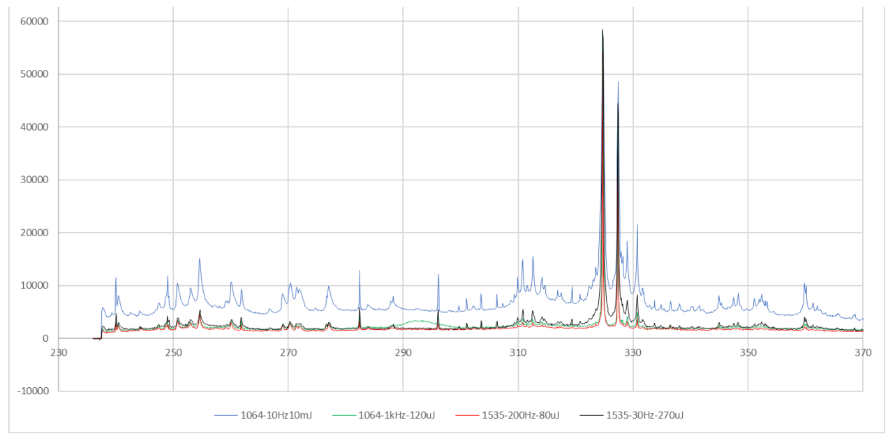
Spectra
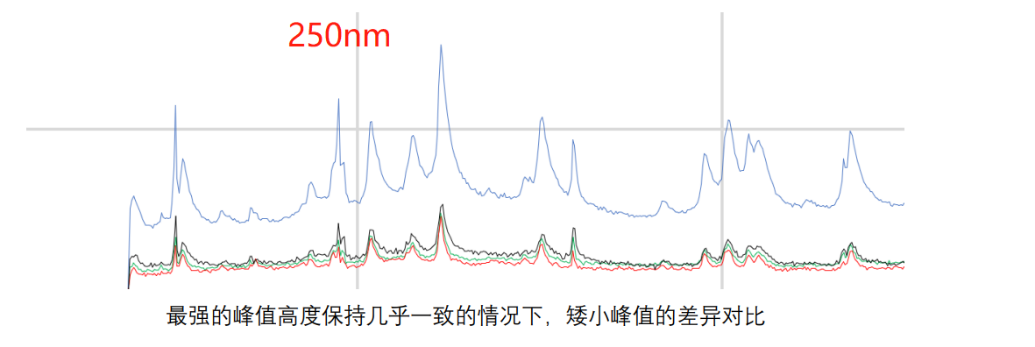
From the test diagram, we can see that the spectral data of 1064nm laser and 1535nm laser are basically consistent when they excite LIBS at high and low repetition rates. There is no difference in excitation effects between 1535nm and 1064nm lasers.
3.Testing the excitation effect of 1535nm laser on light metal ores
In order to verify the feasibility of 1535nm in the field of light metals, a 1535nm 1mJ laser was used to test spodumene samples at 5Hz repetition rate. The test spectra are as follows:
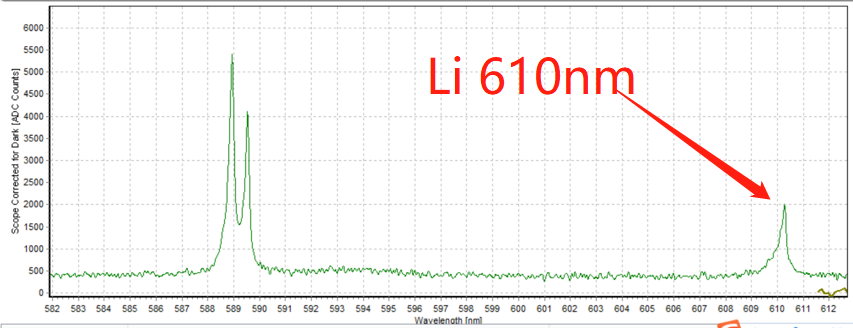
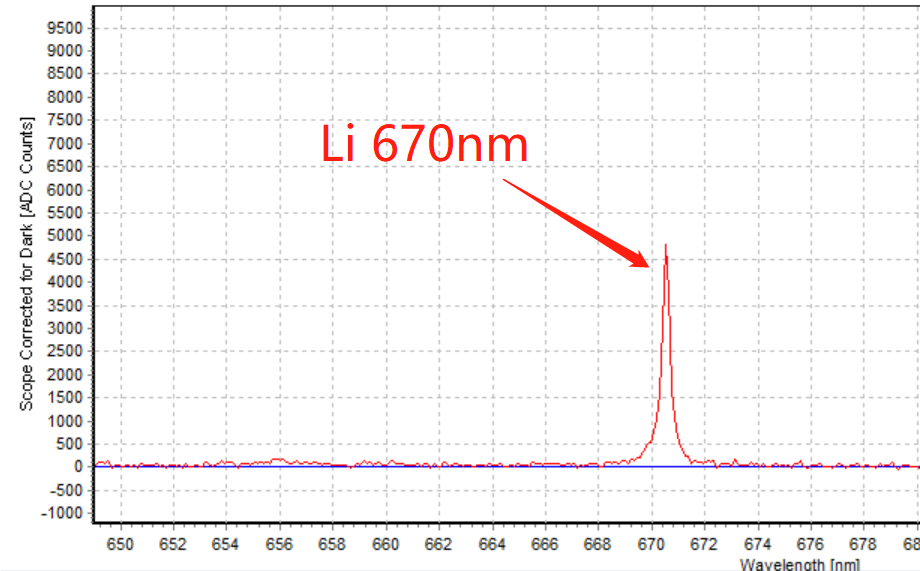
Test spectra of spodumene samples using RealLight’ 1535nm 1mJ laser
It can be seen from the experimental data that 1535nm laser can effectively excite the characteristic spectral lines of BE elements. Using 1535nm laser can realize the detection of ore composition.
The erbium glass laser has a broad application prospect in handheld LIBS equipment based on its principle and structure.
Firstly, due to the relatively flat absorption coefficient of the absorption spectrum of erbium glass in the wavelength range between 910nm and 950nm, this laser can achieve wide temperature operation (-40~65 ℃) without using temperature control, and has high power stability.

Energy stability < 1% (measured value is 0.61%)
Secondly, the laser can be produced using semiconductor packaging technology, with nitrogen sealing ensuring no condensation at low temperatures of -40 ℃. The volume and weight of the laser are very small. For a typical 1mJ laser, the weight of the laser head does not exceed 20g. The laser can be equipped with PD to detect light and trigger the acquisition device.
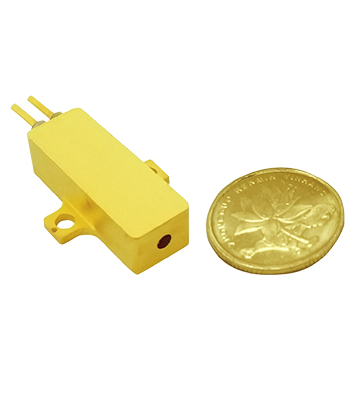
RealLight’s 1535nm laser
Addtionally, since the laser does not need to use TEC temperature control, the overall power consumption of the system is extremely low. The circuit size can be within 20X40mm, which is suitable for long-term use in the field.
The above characteristics, combined with the fact that 1535nm lasers emit in the eye-safe spectral region, greatly reduce the laser safety risks in the use of instrument. The LIBS handheld devices using 1535nm erbium glass laser as the light source are attracting the attention from domestic and foreign equipment manufacturers.
RealLight, founded in 2010, is a high-tech enterprise specializing in semiconductor lasers, microchip lasers, narrow linewidth lasers, high power solid-state lasers, laser detection and application technology. We will provide support for users in the field of LIBS applications.
The following two erbium glass lasers are recommended:
